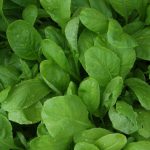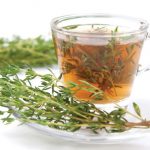Radiation Free Homes and Offices-10 Indoor Plants To Eliminate Radiations
TABLE OF CONTENT
- Introduction to radiations
- Symptoms of radiations
- List of plants
- Stone lotus flower
- Spider plant
- Aloe vera
- Rubber plant
- Cactus
- English Ivy
- Betel leaf plant
- Asparagus fern
- Mustard greens
- Snake plant
We live in a world ruled by technology and we are nothing but slaves to this world. Have you ever imagined how these beloved gadgets of yours are slowly killing you at your back?
Electric and magnetic fields (EMFs) are invisible areas of energy, often referred to as radiations. Excessive radiations are the root cause of various health ailments, like- allergies, risk of cancer, stress, and neurological disorders.
According to the World Health Organization’s International Agency for Research on Cancer (IARC), EMFs are “possibly carcinogenic to humans.” The IARC believes that some studies show a possible link between EMFs and cancer in people.
Symptoms of EMF exposure
According to some scientists, EMFs can affect the body’s nervous system function and cause harm to cells. Cancer and unusual growths may be one symptom of very high EMF exposure. Other symptoms may include:
• headache
• tiredness and fatigue
• dysesthesia (an itchy sensation)
• changes in memory
• dizziness
• irritability
• restlessness and anxiety
• sleep disturbances, including insomnia
• depression and depressive symptoms
• loss of appetite and weight loss
• nausea
• lack of concentration
• changes in an electroencephalogram (which measures electrical activity in the brain)
• skin burning and tingling
But, we don’t yet know enough about its effects on human health and have insufficient evidence. Further research in the next years may clear all our doubts.
Well, there is a way out of this ferocious circle. How many of you are aware of t anti-radiation plants? Yes, you read it right. Some miraculous plants are a boon to today’s human era. As the name anti-radiation describes them well, these contribute by absorbing the electromagnetic radiations emitted by our dear gadgets and purify the air inside a room.
What’s more? Plants absorb carbon dioxide and return oxygen, boost immunity and metabolism. Keeping them around, help in lowering stress levels and headache frequency.
Due to the COVID-19 pandemic, every task has taken an online route which means more exposure to dangerous rays. So, place a plant in near vicinity to minimize the harmful effects.
List of plants that eliminate radiations
Let’s have a look at the list of plants that absorb these harmful radiations:
• Stone lotus flower
This plant does not demand daily watering, twice in a week is more than sufficient. It gives your workplace an aesthetic look and a nice smell. It’s not only beautiful but also eliminates radiations. It is easy to care for.
• Spider plant
It is effective in improving air quality by reducing the toxins to a considerable amount ( NASA recommended). It is highly in demand and gives a great look to the place. It is effective in absorbing nuclear radiations, speeds the recovery of patients, maintains indoor humidity, and reduces stress.
• Aloe Vera
It is very well known for its skin, hair, and medicinal benefits. We bet you would have never thought that it could act as an anti-radiator. Well, this is the truth about this multi-specialty succulent.
it is a natural laxative, it can fight breast cancer, it can keep your skin hydrated and can lower your blood sugar levels.
• Rubber plant
This beautiful indoor plant absorbs high-frequency radiations when kept beside your gadgets. It acts as an effective air purifying plant and is known for its radioactive properties. It requires less maintenance. other benefits;
1. decreased chances of getting allergies
2. promotes stomach health
3. natural analgesic
• Cactus
In 2005, NASA conducted a home-based study and found that at least five plants commonly planted in-house at home or in offices can significantly absorb EMF radiations from electronic devices such as computers and phones – and cactus was one of them. Placing even a small cactus can reduce harmful radiation and purify the air. To elaborate;
1. it is an antiviral
2. has neuroprotective properties- a 2014 study found that it can protect nerve cells
3. high in antioxidants- a 2013 study found that the cactus is able to reduce oxidative stress.
4. regulates blood sugar levels- A 2012 study recommends that taking nopal cactus together with other diabetes medications helps regulate blood sugar.
5. It may reduce cholesterol- as suggested by a study, cactus can reduce cholesterol and also the LDL levels
6.can eliminate hangovers- A 2004 study proved that nopal cactus extract significantly reduces the severity of hangovers when consumed before drinking.
• English Ivy
Ivy is one of the best absorbers of radiation available. It can absorb up to 90% of benzene in the air within 24 hours. It eliminates carbon dioxide, carbon monoxide, and formaldehyde. Make sure not to overwater your ivy. Its Flavonoids help in removing toxins from the body, tightening and strengthening blood vessels, reduce allergies and modulate enzymes to help your body.
• Betel leaf plant
Because of its hydroxyl and superoxide scavenging properties, it can eliminate the radioactive components from the air and also it absorbs harmful gases too. what’s more;
1. it eases constipation
2. excellent analgesic
3. improves digestion
4. reduces respiratory problems

• Asparagus fern
It has well-known antioxidant properties that help to defend against the damage caused by exposure to gamma radiation.
With a very wonderful fragrance, it has the power to absorb electromagnetic radiations in a room. Ferns have been ranked 9th in the air purifying list of NASA.
• Mustard greens
You must have seen this plant going outdoors but it makes a perfect indoor plant too. It defends against the damage caused due to oxidative stress.
The amount of radiation will greatly reduce and you could breathe in pure air. They are also high in vitamin A, C, and beta-carotene. Hence, they are not only nutritional and delicious but also great at absorbing radiations.T
This plant may improve heart health, could boost immunity, may have anti-cancer effects, rich in disease-fighting antioxidants, and is an excellent source of vitamin K.
• Snake plant
This plant is known to be very effective in converting carbon dioxide into oxygen. It can improve your lung health. If you cannot find cactus, opt for this plant. It can be planted in any type of pot and requires less maintenance.
It absorbs CO2 at night also, is effective against allergies, and is Vastu and Feng shui friendly.
Radiations travel in a straight line, so keep that in mind when setting up your plant, and make sure not to block the path with other items. do not keep anything between your gadget and the plant as it may affect their ability to absorb the radiations.
Gift your family and employees a pure breathing experience by creating a radiation-free home and office.
We can play our part by leaving our phones in another room while sleeping and using ear buds or speaker mode when on a call. In addition to this, we recommend you to cut down the time spent with your gadgets and try spending a moment relishing nature.



















